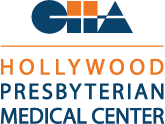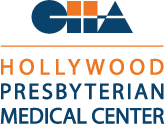Glaucoma is the leading cause of irreversible blindness, and it affects approximately 3 million people in the United States. The term refers to a group of conditions in which damage to the optic nerve from intraocular pressure, inflammation, trauma or reduced blood flow causes significant restriction of vision or total loss of sight.
At the moment, glaucoma treatment focuses on relieving intraocular pressure, whether the treatment method is surgery, laser therapy or topical eye drop medications. Typically, physicians choose medicated drops as the initial treatment, progressing over time to more invasive procedures in order to slow the development of the disease.
Over the past year, several promising new eye drop formulations designed to treat glaucoma have been approved by the United States Food and Drug Administration (FDA). Additional potential treatments are being developed.
Two New Medications Approved by FDA
According to VisionAware, a publication of the American Foundation for the Blind, two new medications approved by the FDA in 2017 hold promise as treatments for people with glaucoma. Prior to the arrival of the new drugs, physicians were treating the disease using medications developed in the 1970s.
Researchers at the Indiana University School of Medicine’s Glick Eye Institute conducted clinical trials on both the new drugs. Glick Eye Institute has a reputation as a leader in innovative glaucoma treatments. The newly approved medications are Rhopressa, made by Aerie Pharmaceuticals, and VYZULTA, manufactured by Bausch + Lomb.
The Indiana team point to the potential of the two drugs being able to fill the unmet needs of many patients with glaucoma.
Rhopressa
Previous generations of glaucoma drugs focused on improving the eye’s secondary drainage network. The ophthalmic solution Rhopressa works to lower intraocular pressure by enhancing the outward flow of the trabecular meshwork, which is the main drainage pathway for the aqueous humor. In addition, evaluators have declared Rhopressa safe for most patients.
One of Rhopressa’s unique benefits is that it works to treat normal tension glaucoma. Current medications are often unsuccessful at treating this variety of the disease, in which small increases in intraocular pressure produce optic nerve damage.
RxList, the online database for prescription drug information, notes that Rhopressa (netarsudil ophthalmic solution) is indicated for use in patients with the commonly diagnosed open-angle glaucoma, as well as for those with ocular hypertension. Potential side effects include pain on application, redness, burst ocular blood vessels and development of abnormalities of the cornea.
VYZULTA
VYZULTA, a prostaglandin analog, opens the uveoscleral pathway to help decrease intraocular pressure. VYZULTA contains nitric oxide, which has the effect of dilating the blood vessels. As a result, physicians consider its presence as a pharmacological component a benefit, as it promotes a healthy blood supply to the optic nerve.
The Glick Eye Institute team points out many people with glaucoma are not able to adequately regulate the blood flow to the optic nerve. VYZULTA not only decreases intraocular pressure, it also dilates the blood vessels. It may even offer a protective effect to the neural system, thereby providing greater support to the health of the optic nerve.
VYZULTA, according to RxList, is similar to Rhopressa as a drug indicated for the treatment of open-angle glaucoma and intra-eye hypertension. Possible side effects of using VYZULTA (latanoprostene bunod ophthalmic solution) are changes in eye pigmentation and eyelashes, inflammation of the eye, bacterial keratitis and macular edema.
Advantages of Rhopressa and VYZULTA
Another advantage of both Rhopressa and VYZULTA is ease of administration. Patients only need to administer them once a day, instead of numerous times over the course of a day.
According to the Glick Eye Institute team, the new medications are the result of recent discoveries about glaucoma and its potential treatments. Researchers consider the debut of Rhopressa and VYZULTA (as well as recent developments in minimally invasive glaucoma surgeries) to be important contributions to the treatment of glaucoma.
Hydrogel Technology as a Future Glaucoma Treatment
In April 2018, Science News reported on an experiment at the University of British Columbia (UBC). The experiment was designed to develop a more effective product for delivering medicated eye drops to the part of the eye where they are most needed.
The UBC researchers found only a fraction of the eye drops commonly used today for glaucoma treatment actually remain in a patient’s eye. Furthermore, these medications often fail to reach the back of the eye or the optic nerve. These treatments thus do not relieve sufficient intraocular pressure or rebuild the health of damaged nerve cells.
The UBC product under development consists of a hydrogel containing an active ingredient of cannabigerolic acid. This substance has shown potential to decrease some of glaucoma's symptoms.
The research team noted that, in animal testing, the hydrogel drug delivery mechanism was able to dissolve over the course of a night, penetrating the cornea. The numerous nanoparticles in the team’s hydrogel compound are able to increase the effectiveness of the cannabinoid medication, although cannabinoids typically resist dissolving in water.
The Importance of Research
Research into still innovative glaucoma drugs continues. For example, in 2018, the Aerie Pharmaceuticals team that developed Rhopressa was working on another medication, Roclatan, hoping to earn FDA approval in 2019. The Aerie team is developing Roclatan as a paired complement to Rhopressa. This treatment may be capable of delivering all of the recognized mechanisms for decreasing intraocular pressure in a single product.
By 2050, the Glaucoma Research Foundation believes, the number of American adults living with the disease will have doubled. This makes research into these and other innovative treatments a matter of concern and haste for professionals and the public.
 ENGLISH
ENGLISH  РУССКИЙ
РУССКИЙ 


